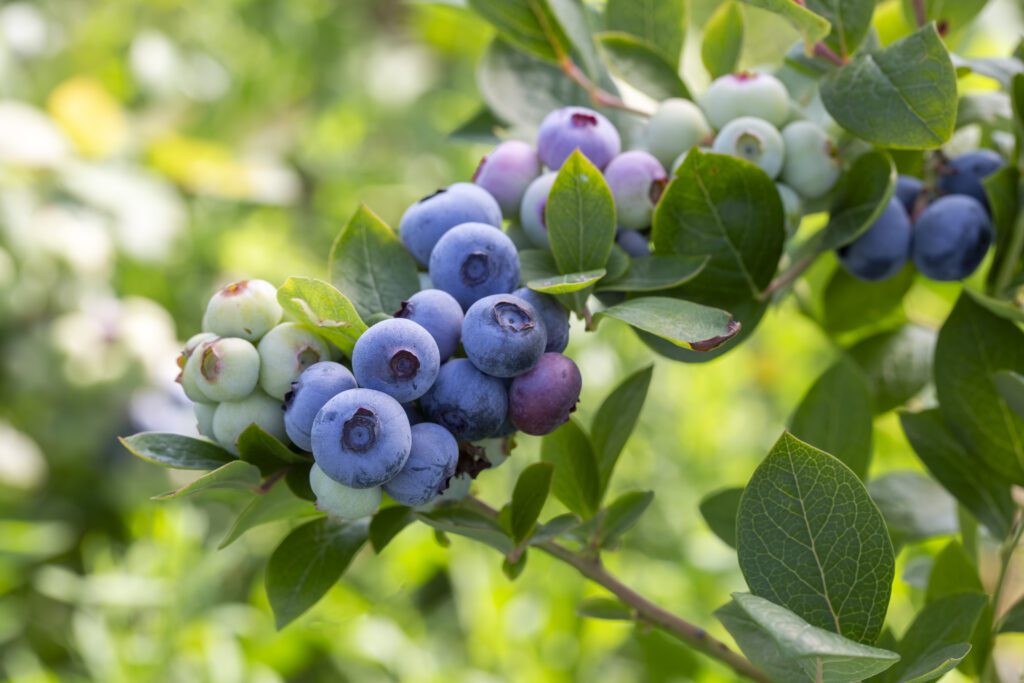Price Drop Closes an Otherwise Strong Season
by RYAN MILEJCZAK
As Florida blueberry growers reflect on the close of the season, they’re sharing reports of ideal weather, high yields, and a mid- to late-season supply swell that tanked market prices. Overall, the state had a strong season until some growers were forced to leave berries in the field.
“The volume was great, and we had a good production year,” explains Brittany Lee, former executive director of the Florida Blueberry Growers Association and current member of the U.S. Highbush Blueberry Council who runs Florida Blue Farms in Gainesville. “The weather until the very end was perfect, and we probably couldn’t have asked for better April weather. But as expected, we had a price drop around week 17, and it seems worse every year. So that was the one major downside to the year.”
Ryan Atwood, the Immediate Past President of the Florida Blueberry Grower’s Association and one of the owners of H&A Farms in Mt. Dora, echoed this sentiment.
“If you would have talked to me before April 20, I would have told you things were going really well. But the speed at which the market collapsed is like nothing I’ve ever seen in my 16 years in the industry,” he recounts. “Prices fell extremely fast.”
This severe price drop led to many producers leaving fruit on the bush toward the end of the season because it became no longer profitable to harvest. This price drop occurs at the end of the season largely because of competition from other countries and growing regions, such as Mexico and the state of Georgia. In these regions, blueberries ripen later, typically some time around the start of May. This influx of new fruit, as well as the lower prices foreign producers can sell their fruit at, causes significant price drops as supply overtakes demand.
Of course, some growers had a more generally positive outlook on the season thanks to facing fewer struggles than last season, particularly those in the more southern areas, such as Bobby Barben of Barben Farms in Avon Park. “The 2024 season was a better year production wise for us, mostly due to the hurricane that hit us in late 2022 affecting the 2023 harvest,” he says.
Meanwhile, Kyle Straughn, vice president of the Florida Blueberry Growers Association and one of the owners of Straughn Farms in the northern portion of the state, did notice the price drop but wasn’t as heavily affected.
“We had a good season. The price wasn’t as good as it’s been in the past, but we had good volume, and we got the majority of the crop off before the price dropped.”
Something notable about this season that was mentioned by many growers we spoke to was a peculiar lack of birds. Typically, birds — mainly robins and waxwings — can be particularly troublesome pests because they consume quality fruit. But this year, growers barely saw any birds. While they were stumped as to the exact cause, they did have a few theories.
“I think South Florida last year had less fruit in general because they had some hurricane damage from the hurricane that came through. I think that forced some of the flocks further north,” Atwood theorizes. Meanwhile, Barben chalked it up to good picking rotation practices.
“It seems at the beginning of every season we have a lot of birds, but the problem seems to take care of itself once we get into a picking rotation,” he explains. “I’m not sure why, but possibly because you’re taking away the food source by staying on a good rotational harvest.”
Straughn, however, thinks weather played an important role in the bird mystery.
“Essentially, we didn’t have a freeze, even in North Florida and South Georgia, so I believe the birds had plenty of food out in the wild and the swamps for them, leading to us having fewer bird issues than we do normally.”
Hard numbers on this year’s production aren’t currently available, but estimates place the amount in excess of 20 million pounds produced. Some of the most common varieties grown by growers we spoke to are Meadowlark, Optimus, Sentinel, and Arcadia. Other varieties include Avanti, Kestrel, Albus, Farthing, and San Joaquin.
“We’re looking to replant some acreage this summer and fall, and continue to implement the newer varieties that UF/IFAS has come out with, which I believe will be the future of the industry,” Lee says.
Looking ahead, growers are cautiously optimistic about the future of the Florida blueberry industry. In addition to moving to newer blueberry varieties, greater implementation of machine harvesting was also mentioned by many as the future of the industry.
“I believe we must move to more machine harvesting to reduce harvesting cost. I believe it will need to be a hybrid program with machine and hand picking,” says Barben.
Lee echoed this statement.
“I’m cautiously optimistic that as we Florida growers continue to innovate, replant newer varieties, and become more mechanized in our operations, we will be able to remain a viable industry and a profitable one.”

